Newfound ‘bambootula’ spider lives inside bamboo stems
This is the only tarantula known to choose such a habitat
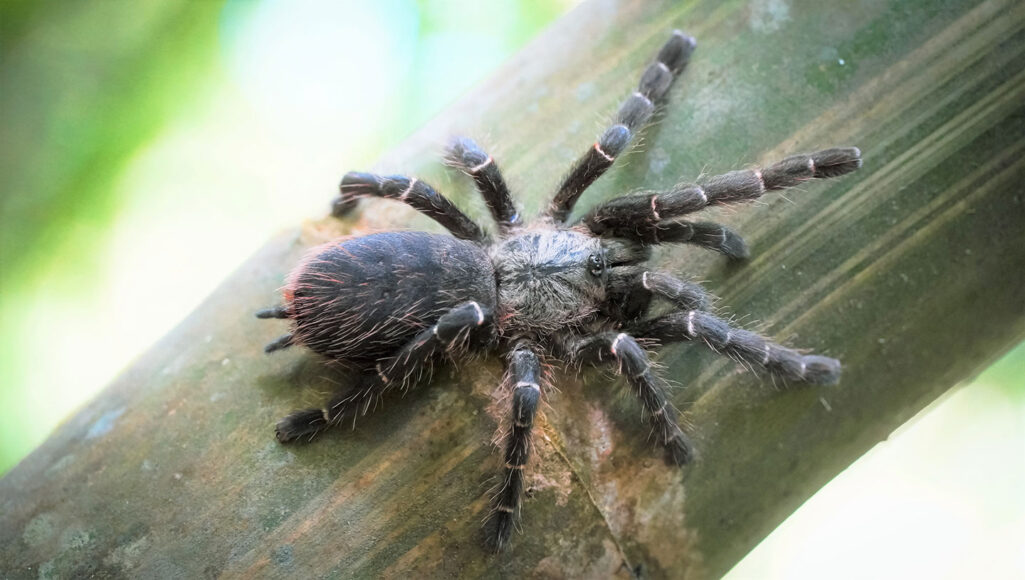
Taksinus bambus, nicknamed “bambootula,” is the only tarantula known to live inside bamboo stems. This new genus of tarantula was recently discovered in Thailand by JoCho Sippawat, a popular YouTuber.
J. Sippawat
By Becki Robins
Meet “bambootula.” This newfound tarantula lives in northern Thailand. It gets its nickname from the bamboo stems where it makes a home.
This spider is a member of a genus — a group of related species — that scientists had never seen before. Its discoverers say it’s the first time in 104 years that anyone has turned up a new genus of tarantula in Asia.
But that’s not all that’s new. Bambootula “is the world’s first tarantula with a biology tied to bamboo,” says Narin Chomphuphuang. He is a biologist who specializes in spiders. He works at Khon Kaen University in Thailand. He’s also part of a Thai research team that studied and described this animal January 4 in ZooKeys.
-
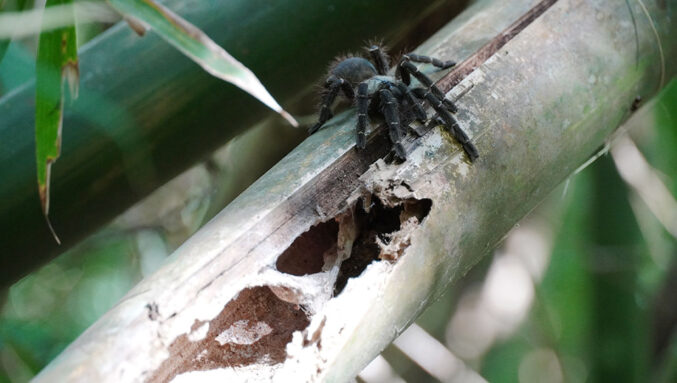
These tarantulas do not make holes in bamboo stalks. They just opportunistically make a home in any holes they may find. J. Sippawat -
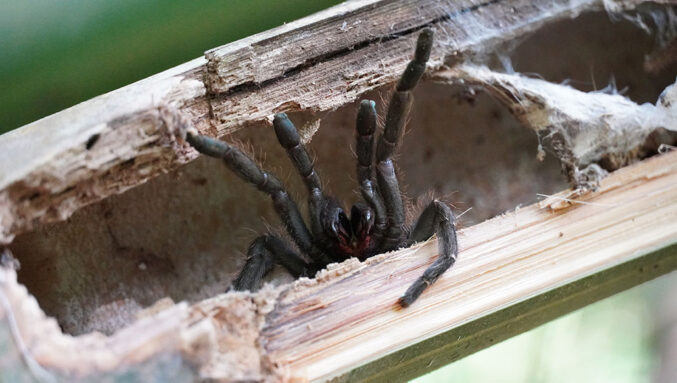
Here’s a “bambootula” spider near parts of the silk retreat tube they weave inside hollow bamboo culms. J. Sippawat -
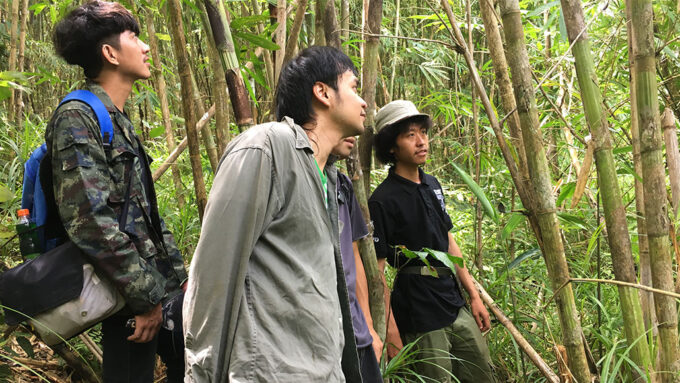
Here’s a research team in Thailand studying the entrance hole in a bamboo culm, hoping to spot a tarantula. N. Chomphuphuang -
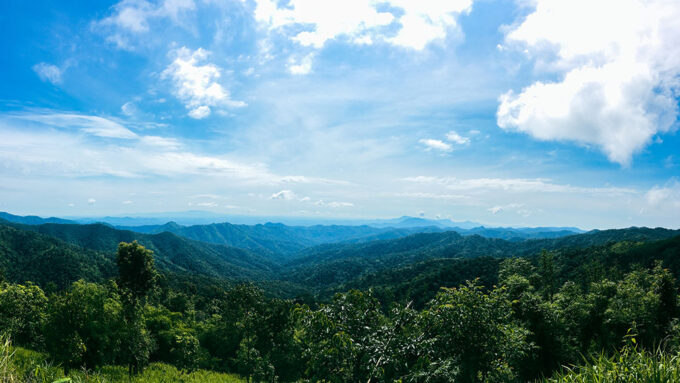
Here’s a Thai forest dominated by bamboo, a type of tall grass. This habitat is the only known environment of the newfound “bambootula.” N. Chomphuphuang
The team officially named the spider Taksinus bambus. The first name is a nod to Taksin, a former king of Siam (now Thailand). It’s second name comes from the sub-family name for bamboo — Bambusoideae.
There are many reasons why these spiders may have evolved to live in bamboo stems, Chomphuphuang says. Bamboo stems are known as culms. They not only give the tarantulas a safe place to hide, but they also save them the need to burrow or build a nest from scratch.
Once inside the culm, these spiders build a “retreat tube,” Chomphuphuang says. Made of spider silk, this tube keeps the tarantula secure and helps it move around easily while it’s inside.
T. bambus lacks the tools to bore into a bamboo stalk. This spider therefore relies on other animals or natural forces to create an entry hole in the culm. Insects like the bamboo borer beetle eat bamboo. So do small rodents. Stalks may crack naturally, too. Any of these things could make holes big enough for the tarantulas to enter.
An unexpected find
Not every important discovery is made by a scientist. And that’s true here. T. bambus was first discovered by a popular wildlife YouTuber named JoCho Sippawat. He was cutting bamboo in the forest near his home when he saw one of the tarantulas drop from a stem.
Linda Rayor is a biologist at Cornell University in Ithaca, N.Y., who was not involved in the discovery. She points out that new spiders show up all the time. So far, some 49,000 species of spiders are known to science. Arachnologists — spider specialists like her — think that one in every three to five spider species alive has yet to be found and named. Anyone can find a new one, she says, including “local people looking and exploring and watching things.”
Sippawat showed a photo of bambootula to Chomphuphuang. The scientist immediately suspected this spider was new to science. His team confirmed this by looking at the tarantula’s reproductive organs. Different types of tarantulas have clear differences in the size and shape of those organs. That’s a good way to tell if a specimen comes from a new genus.
Chomphuphuang says habitat type also was a big clue here. Other Asian tree-dwelling tarantulas are found in habitats unlike where bambootula showed up.
So far, T. bambus has been found only in a small area. It makes its home in high hill bamboo “forests” at elevations around 1,000 meters (3,300 feet). These forests have a mix of trees. They’re dominated, however, by bamboo — a tall, stiff-shafted grass. The researchers found the tarantulas living only in bamboo, not in any other plants.
“Few people realize how much wildlife in Thailand is still undocumented,” says Chomphuphuang. Forests now cover only about one-third of the country. It’s important for scientists to keep looking for new animals in such areas, he says, so they can be studied — and, where needed, protected. “In my opinion,” he says, “many new and fascinating organisms are still waiting to be discovered.”







